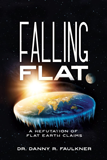
The Golden Anniversary of the End of the Apollo Era: Why We Haven’t Been Back
Why humans haven’t visited the moon in 50 years.
Fifty years ago this week, Apollo 17, the final Apollo mission, lifted off the lunar surface. The crew, Gene Cernan, Harrison Schmidt, and Richard Evans, launched from earth on December 7, 1972, landed on the moon on December 11 and returned to earth on December 19. It was my freshman year at Bob Jones University. Everyone knew at the time that this was the end of the Apollo program, but few of us realized this was the close of an era. Most people assumed that NASA would soon unveil a new program to return to the moon. There was even anticipation that space travel and trips to the moon would become so routine that space tourism would develop by the end of the century. Between 1968 and 1971, Pan American Airlines accepted 93,000 reservations for flights to the moon, with an anticipated first flight in the year 2000. Pan American famously ceased to exist in 1991, a decade short of its planned first flight to the moon.
What Went Wrong?
Predictions of life in the future always seem to be wrong.
After 50 years, no one has stepped foot on the moon again. What went wrong? Predictions of life in the future always seem to be wrong. For instance, 50 years ago, utility companies anticipated electricity would eventually be too cheap to meter. This was based upon extrapolation of the steady decrease in the per unit price of electricity that had occurred over the previous 75 years. Utility executives apparently didn’t realize that the tremendous savings due to efficiencies of ever-larger power plants were maxing out. The first oil shock (an OPEC embargo, which caused an oil shortage in most Western nations) in October 1973 abruptly ended that dream. Similarly, the airline industry thought that the tremendous developments in aircraft over the previous half-century would continue indefinitely. However, aircraft design has not changed much over the past 50 years.1 With the airline industry's deregulation 40 years ago, many people think the flying experience is not as pleasant as it once was.
In the case of NASA, economics played a key role in why there has been no return to the moon. At its height, the Apollo program consumed about two percent of the Federal budget. Many people questioned why we were spending so much money to send men to the moon when that money could be better spent addressing human problems here on earth. Why did we go to the moon in the first place? In my blog on the golden jubilee of Apollo 11, I explained that going to the moon was an expression of nationalism. It was the height of the Cold War, and the United States wanted to demonstrate the superiority of the West and our way of life over communism. But once we achieved the goal of being the first to reach the moon, why continue going to the moon? People soon lost interest, so what public support the Apollo program enjoyed seriously eroded shortly after the first few missions.
And NASA had other priorities. One priority was to establish a space station so that we could have a permanent presence in space. Most people have forgotten about Skylab, NASA’s first space station. Launched in 1973, Skylab was occupied by three crews during 1973–1974. Meanwhile, another NASA priority was the space shuttle—intended to make space travel routine. The space shuttle was intended to deliver additional crews to Skylab and boost Skylab’s orbit as it decayed. The space shuttle was initially projected to launch in 1977, but problems delayed its first flight until 1981. Meanwhile, in 1979, NASA helplessly watched as Skylab crashed to earth. At the time, it seemed things had gone terribly wrong at NASA.
NASA eventually established the International Space Station (ISS) in cooperation with several other nations, including our former Cold War foe, Russia. The space shuttle played a key role in constructing the ISS, as well as ferrying crewmembers to and from the ISS, at least until the retirement of the space shuttle in 2011. But NASA retired the space shuttle with no replacement program to launch astronauts into space. Thus, for nearly a decade, US astronauts were transported to and from the ISS in Russian spacecraft. It wasn’t until 2020 that an American spacecraft, SpaceX’s Dragon capsule, was used to send astronauts to and from the ISS. The Boeing Starliner2 will join the Dragon capsule in this endeavor in 2023. Long delays in development and retiring spacecraft with no replacement indicate that NASA is not what it was in the 1960s.
Perhaps I ought not to be so critical of NASA because these faults may be due to changes in our culture more than problems at NASA. The can-do spirit of the 1960s and earlier decades seems to be missing from American culture now. The Apollo 1 fire in 1967 that killed three astronauts revealed some major problems with the design of the Apollo spacecraft. The program was delayed for a year and a half to allow for major revisions of the spacecraft. In contrast, the 1986 Challenger disaster that killed seven astronauts was followed by two and a half years of no-shuttle flights for a full investigation that resulted in no major design changes and only a few procedural changes. Similarly, the Columbia disaster in 2003, which also killed seven astronauts, resulted in another two-and-a-half-year delay in shuttle flights with no major changes in the shuttle program. Our culture is far more risk-averse than it was a half-century ago. Another cultural change is evidenced by calls for more diversity in the next moon landing program, with representatives of different ethnicities and sexes in the crew. At the risk of being branded a bigot, commitment to such a principle threatens to undermine the standard of selecting the best people for such a mission.
Conclusion
So, why haven’t we returned to the moon over the past half-century? There are several reasons. One reason is that the Apollo program focused on achieving an objective—beating the Soviets to the moon. But once we did that, what was the point of doing it again and again? The novelty of going to the moon soon wore off, so support for additional Apollo missions faded. The recent launch of the uncrewed Artemis 1 rocket to the moon was intended to recapture Americans’ imagination in returning to the moon, but it seems to have failed in that respect. The Artemis 2 mission planned for 2024 will take four astronauts on a mission to orbit the moon but not land on the moon. The Artemis 3 mission scheduled for 2025 is intended to return people to the lunar surface. If these missions are completed, I doubt that they will capture the public’s imagination as Apollo 11 once did.
The second reason is cost. Taxpayers may be willing to fund a return to the moon, but only if the price is right. Currently, it is anticipated that each launch of an Artemis mission will be 4.1 billion dollars. As during the waning days of the Apollo program, there will be questions as to why we are spending such large amounts of money to return to the moon when they might be better spent addressing problems on earth.
Robotic spacecraft can complete all the science that humans could do on Mars at a tiny fraction of the cost.
Finally, technology has made sending people on space missions superfluous. Robotic spacecraft have demonstrated that humans are not necessary for successful space missions, as evidenced by several rovers and, more recently, a helicopter on the surface of Mars. People have many special needs, such as air, water, food, and hygiene, that machines do not. People add tremendously to the size and cost of spacecraft. Now there is talk of sending a manned mission to Mars. Such a mission is technologically possible, but it would be a two-year mission. The Apollo missions to the moon took less than two weeks and amounted to camping trips. But a mission to Mars would require living in space for two years, with necessary storage or production of the crew’s air, food, water, and hygiene needs the entire time. The cost of such an endeavor is staggering. Robotic spacecraft can complete all the science that humans could do on Mars at a tiny fraction of the cost. A similar thing is true of the moon.
Footnotes
- As an example of this, consider the Boeing 747. Introduced in 1970, Boeing recently announced that production of this iconic jet will cease this year after a 52-year run.
- The first Starliner mission will be commanded by veteran astronaut Barry Wilmore. Wilmore is a born-again recent creationist, and he has spoken at Answers in Genesis events several times.
Recommended Resources

Answers in Genesis is an apologetics ministry, dedicated to helping Christians defend their faith and proclaim the good news of Jesus Christ.
- Customer Service 800.778.3390
- © 2024 Answers in Genesis




